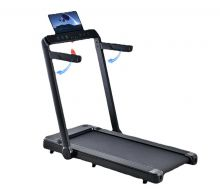The benefits, drawbacks and exercises of balance board
Balance boards have come a long way from being a basic tool used by ancient cultures for balancing to a modern device used for physical therapy. While their primary function has remained the same, their uses have greatly expanded. First, balance boards are used to improve balance and proprioception. Proprioception is the ability to perceive the position of limbs and joints in space. It is an important aspect of movement and coordination. Poor proprioception can lead to clumsiness and a greater risk of injury . But it’s not all about these seemingly simple boards. Read on to learn the benefits, drawbacks and exercises you can perform with a balance board.

Benefits of using a balance board
There are many benefits to using a balance board. These include
(1) Improved balance
Your body’s ability to balance is brought about by several systems. Here’s how it works (1).
The eyes tell the brain where your body is in space.
The proprioceptors are sensors located in the muscles and joints that provide information about the position and movement of your limbs.
The vestibular system, located in the inner ear, helps the brain process information about movement and the position of your head.
All of these systems work together to help you maintain balance.
When one or more of these systems are not working properly, you may have difficulty maintaining your balance. This can lead to falls and other accidents.
A balance board can help improve your balance by challenging these systems. By constantly adjusting the board’s movements, you train your body to better process information from all of its balance-related systems ( 1 ).
Improve focus and coordination
Because using a balance board requires concentration and coordination, it can help improve these skills ( a ). This is especially beneficial for children and older adults, who may have difficulty with concentration and coordination.
Better Posture
Poor posture is a common problem today. Many of us spend our days hunched over a computer or cell phone, which can lead to rounded shoulders and a hunched back.
This poor posture can lead to muscle imbalances and pain. It can also throw your center of gravity off (2), which can make balance more difficult.
Standing on a balance board can help improve your posture by exercising muscles that are often neglected when you are sitting or standing still. As you adjust your body to balance on the board, you will naturally begin to stand straighter.
Stronger Joints
Joints are the things that connect our bones and allow us to move. They are held together by the ligaments and muscles that support and stabilize them.
If you don’t use your joints regularly, they can become weak and unstable. This can lead to joint pain and a greater risk of injury.
Standing on a balance board helps strengthen the muscles and ligaments that support the joints. This helps improve joint stability and reduces the risk of pain and injury ( 1 ).
Better reaction time
Your reaction time is the amount of time it takes for your body to respond to a stimulus. This is an important skill because it can help you avoid accidents and injuries.
Disadvantages of using a balance board
While balance boards offer many benefits, there are some disadvantages to consider. These include
Risk of injury
Since a balance board requires you to constantly adjust your body to maintain balance, there is a risk of injury if it is not used properly.
Always warm up before using a balance board and then start with simple exercises. As you become more comfortable, you can move on to more challenging exercises.
It is also important to listen to your body. If you feel pain, stop and rest immediately.

评论
发表评论